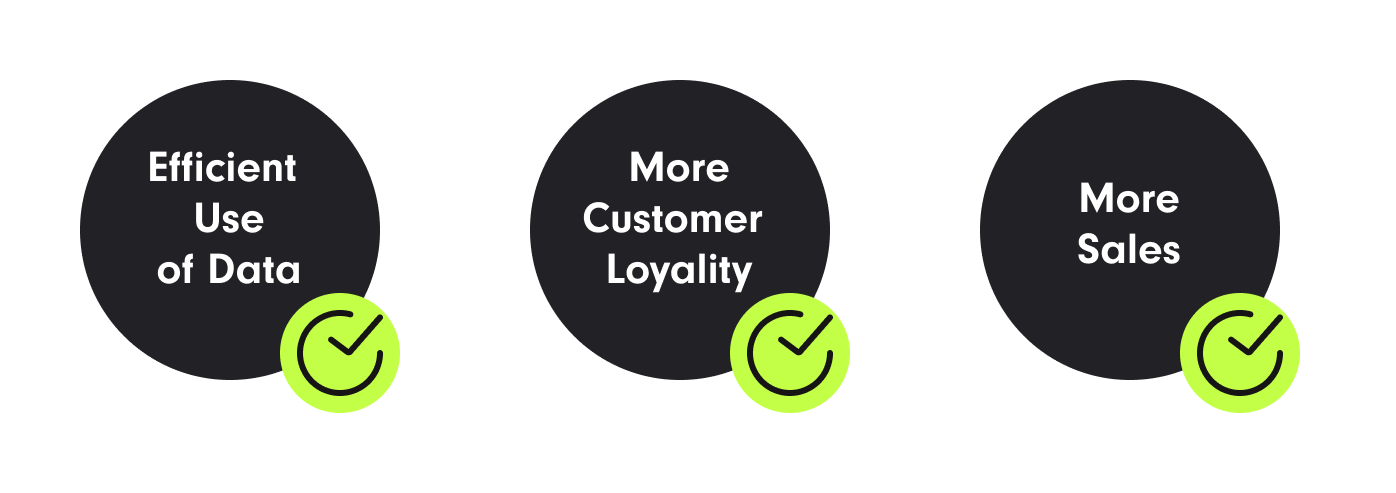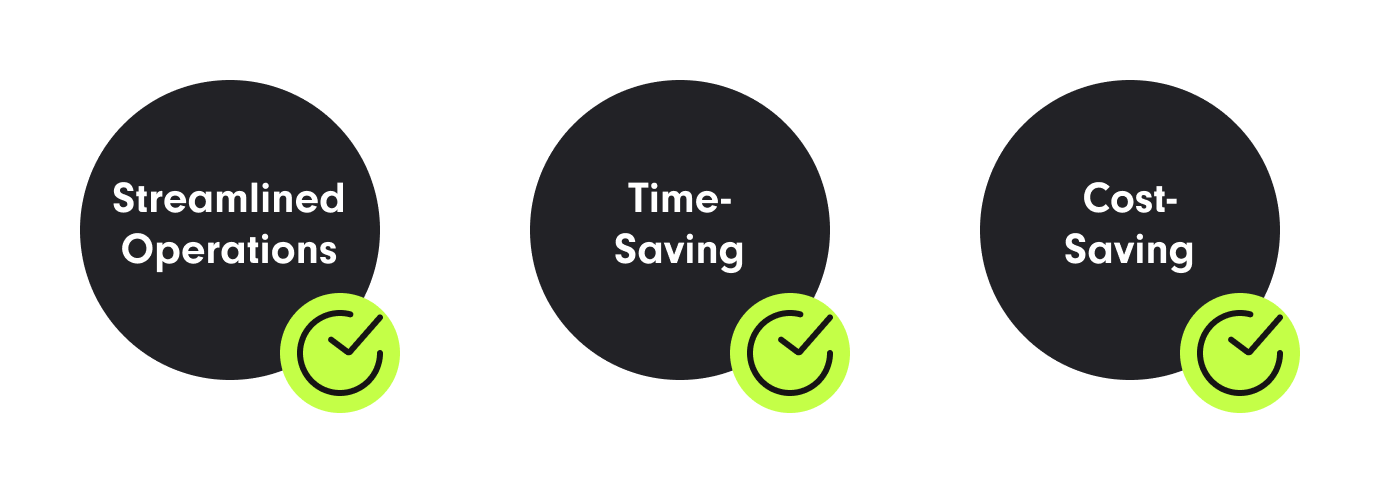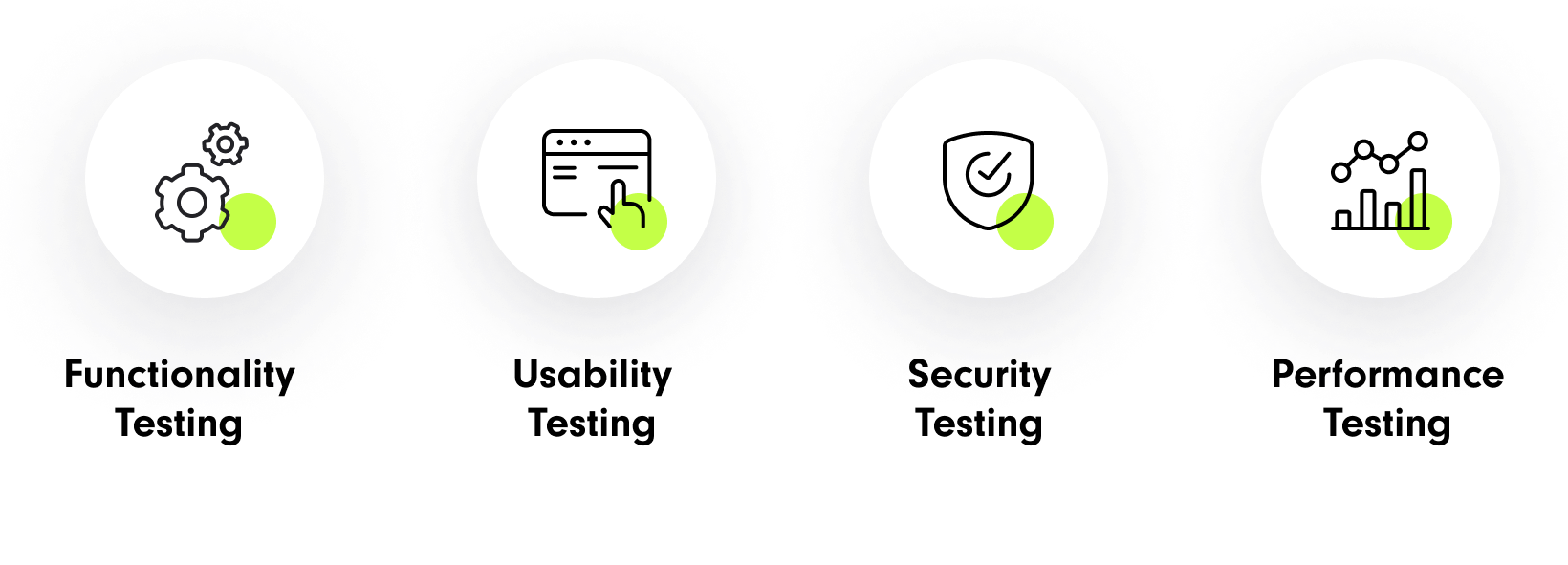In this article you will learn the following:
- Understand what are B2B customer portals.
- How to identify if you need a B2B online shop or a B2B Customer portal.
- How Customer-centric Portals Enable Growth in B2B Businesses with Industry Examples.
- Steps & actionable tips to develop a customer-centric portal for B2B businesses
- Advantages SUNZINET offers as your growth partner
So let us dive in!
01. Understanding Customer Portals in B2B Business
A customer portal in B2B Businesses serves as a digital platform that enables interaction and transactions between businesses and their customers. It's a centralized space where clients can access services, information, and resources tailored to their needs.
02. Do you need a B2B online shop or a B2B Customer portal?
B2B Online Shop:
A B2B Online Shop primarily facilitates sales transactions, offering a straightforward platform for purchasing products or services. It's designed for efficiency in the buying process, featuring product descriptions, pricing, and easy purchasing options.
A B2B Online Shop is ideal for businesses when:
-
The primary goal of the business is to streamline and boost sales processes.
-
The businesses looking to expand market reach and simplify the purchasing journey for their customers.
-
Useful in cases where product range and pricing are key drivers of business.
B2B Customer Portal:
In contrast, a B2B Customer Portal provides a more comprehensive solution, extending beyond mere transactions to encompass features like order tracking, support ticket systems, and personalized content.
You need a B2B customer portal when:
-
You want to build long-term relationships with your customers.
-
Providing customer support and service customization are crucial to your business model.
-
Your businesses need to integrate with other systems to get a comprehensive view of customer interactions.
-
If you want to provide value-added services and resources to your customers to increase loyalty and satisfaction.
03. How Customer-centric portals enable growth in B2B Businesses
Effective Use of Data can enable you to increase sales and customer loyalty

By gathering and analyzing customer interactions and preferences, businesses can tailor their offerings, leading to increased sales and customer loyalty.
How Microsoft uses its customer portals to increase sales and retain customers
Microsoft exemplifies the effective use of data through its customer portals. By analyzing customer interactions and feedback gathered on their platform, Microsoft gains insights that optimize customer experiences, creating maximum value for their diverse customer base. Both the marketing and sales teams use these insights to reach the customers with a more targeted approach.
This approach not only leads to increased sales but also enhances customer loyalty as clients perceive a service that is continually evolving to meet their specific demands. (Sinha, 2023)
Streamlined Operations saving your and your client's time and resources

Customer portals simplify business interactions for clients, offering value through increased productivity. By automating processes like order placement and support, these portals reduce operational costs and enhance efficiency for both you and your client. According to Almquist, Cleghorn, and Sherer (HBR, 2018) the ease of business and time savings achieved through customer portals can lead to a substantial up to 43% increase in the repurchasing of goods and services.
How KIENZLE AUTOMOTIVE uses the customer portal to streamline operations
The B2B portal for KIENZLE AUTOMOTIVE has transformed operations, optimizing workflow through features like Employee and Role Management for efficient processes.
Event Management simplifies event organization, Quick Order Functionality expedites procurement, and Product Bundles with Intelligent Search enhance the shopping experience.

Enhanced Customer Relationships for Sustainable Growth

If your organization is not thinking about ways to improve loyalty and customer experience at every touchpoint, then you are losing to your competition. By providing a seamless, personalized experience, portals help in building long-term relationships with customers.
How Adobe uses its customer portals to build long-term relationships with its clients.
Adobe's customer portal is an excellent example of enhancing customer relationships. Their portal offers personalized experiences where users can manage their subscriptions, access a wide range of creative tools, and get tailored support. By providing a seamless, user-friendly interface that remembers individual preferences and usage patterns, Adobe creates a sense of personal connection and satisfaction among its users. This personalized approach helps in building long-term customer relationships, as clients feel valued and understood.
(Buesing, Kleinstein, and Wolff, 2018)
Create new sales channels to accelerate your business
Via Embedded commerce, customer portals can create new sales channels.
Embedded commerce refers to seamlessly integrating e-commerce functionalities into existing service portals and sales workflows. It allows businesses to offer products or services directly within the digital platforms their customers already use. i.e. - Your customers can buy your products or services right where they are, without visiting a separate website or getting in touch with your sales team.
Learn more about embedded commerce and how companies in various industries implement it here:
04. Steps to Develop a Customer-Centric Portal for B2B Businesses
Developing a customer-centric portal involves several critical steps, each playing a vital role in ensuring the portal's effectiveness and alignment with your customer’s needs.
Here's a deep dive into these key steps we take at SUNZINET together with our clients:
- Need Analysis
- Design and User Experience
- Content and Functionality
- Integration with Existing Systems
- Testing and Feedback
- Launch and Training
- Maintenance and Updates
I. Needs Analysis:
Understanding your Customer’s Requirements
The first step to developing a customer-centric B2B portal is to understand your customer better. At this stage, the goal is to engage with your B2B customers to understand their specific needs, challenges, and expectations from the portal. This can involve surveys, interviews, or focus groups.
TIP 1: Here are 6 tools to conduct a thorough need analysis
-
Surveys: Create online or offline surveys to gather quantitative data about client preferences, challenges, and expectations. You can use tools like Google Forms, SurveyMonkey, and Typeform.
-
Interviews: Conduct one-on-one interviews with key stakeholders or representatives from your B2B clients. This allows for in-depth qualitative insights.
-
Focus Groups: Bring together online or offline a small group of representatives from your B2B customers to discuss their needs and preferences collectively.
-
Persona Development: You can create detailed user personas of your ideal customer profile. This helps in visualizing and understanding the diverse needs of different user segments. Tools such as HubSpot's Make My Persona can assist in persona creation.
-
Competitor Analysis: Examine competitors' portals to establish industry benchmarks. Industry benchmarks provide valuable direction and also enhance your ability to assess the quality of your portal effectively.
-
Workshops: Collaborate with your customers to generate ideas and gain valuable insights. At SUNZINET, for instance, we frequently initiate each project with a workshop along with our clients.
Identifying your portal's key features
Based on the needs analysis, identify the key features and functionalities that your portal requires.
TIP 2: 4 features, that are almost always helpful for a B2B customer portal
-
Order Management: Implement features for seamless order placement, tracking, modification, and history to enhance the customer experience.
-
Support Ticketing: Include a user-friendly support ticketing system for easy submission, tracking, and timely resolution of customer inquiries.
-
Account Information: Prioritize accessible and comprehensive account details, preferences, and purchase history for enhanced user convenience.
-
Resource Libraries: Incorporate organized resource libraries for centralized access to essential documents, guides, and information, reducing the need for support inquiries.
Setting Clear Objectives
Define what you want to achieve with the portal - be it improved customer satisfaction, increased sales, or better service efficiency.
Setting Clear objectives at the start of the project, allows you to review the performance of your new portal later.
II. Design and User Experience
User-Centric Design
Focus on creating a design that is intuitive, easy to navigate, and aesthetically pleasing. The user interface should cater to the typical user's technical proficiency.
TIP 3: 4 Tips to create a user-centric design
-
Intuitive Navigation: Prioritize simplicity and ease of navigation. Ensure that users can quickly locate important features and information. Use clear labels, logical menu structures, and self-explanatory icons to enhance the overall user experience.
-
Create visual hierarchies: Use font sizes and information nesting to keep important information and features in focus. Users should quickly understand where to find critical functions and content.

-
Responsive Design: Ensure your portal is responsive and adapts to various devices and screen sizes. This responsiveness is especially important if your customer accesses the portal from desktops, tablets, and smartphones.
-
Personalization: Allow users to customize their experience within the portal. Allow them to create personalized dashboards, save their preferences, and arrange information on their customer view based on their individual needs.
Brand Consistency
Ensure that the portal's design is consistent with your brand's visual identity and messaging. This includes the use of logos, brand colours, and typography.
III. Content and Functionality
Relevant Content
Populate the portal with content that adds value to your B2B customers.
This could include a variety of information, such as detailed product descriptions, user guides, insightful case studies showcasing successful implementations, and Frequently Asked Questions (FAQs).
The goal is to offer comprehensive resources that assist users in understanding products or services and solving potential queries.
Functionalities Aligned with Needs
Aligning functionalities with client needs enhances the portal's practical utility. For example, if your clients often track orders, ensure there is a robust order-tracking system in place.
User Engagement Features
Boost user engagement by incorporating interactive features that foster a sense of community and personalized experience. These features contribute to a more dynamic and user-centric interaction, strengthening the overall engagement with the portal.
TIP 4: Features that enhance user engagement
-
Forums: Forums create a platform for users to discuss relevant topics and share insights.
-
Feedback forms: Feedback forms gather valuable input for continuous improvement.
-
Personalized dashboards: personalized dashboards allow users to tailor their portal experience to their preferences.
IV. Integration with Existing Systems
Seamless Integration
Ensure that the portal integrates smoothly with your existing CRM, ERP, and other systems. This integration is crucial for data consistency and operational efficiency and in making the portal a comprehensive and user-friendly platform.
-
For example, by integrating with the CRM system, customers gain real-time access to personalized purchase histories and recommendations.
-
The integration with ERP ensures that order management and inventory updates occur smoothly.
-
Additionally, PIM integration maintains consistent product information, and DAM integration provides a visually rich experience with readily available digital assets.
Implement real-time data synchronization to ensure that information in the portal reflects the most current data.
Real-time Data Synchronization
Real-time synchronization ensures that your users have access to the most current data, preventing discrepancies and enhancing the reliability of information. This is particularly vital in dynamic business environments where changes happen frequently.
APIs and Middleware
Middleware solutions provide a centralized platform for handling communication between disparate systems, streamlining the integration process.
V. Testing and Feedback
Comprehensive Testing

Here is a checklist of all the tests that businesses should conduct thoroughly:
-
Functionality Testing: Assess all features and functionalities of the portal to ensure they work properly. Check if the user can interact with the portal or not, if there are any problems with form submissions, and or any other functional element.
-
Usability Testing: This includes assessing the ease of navigation, clarity of instructions, and overall user experience. Businesses should involve a group of actual users in the testing phase to gather practical insights and identify any usability issues.
-
Security Testing: Verify the portal's resilience to potential security threats. This involves checking for vulnerabilities, data encryption, and ensuring compliance with security standards.
-
Performance Testing: Evaluate the portal's performance under various conditions, for example when there is high traffic on the portal. This ensures that the portal remains responsive and stable.
Conduct thorough testing of the portal, including functionality, usability, security, and performance tests.
Incorporate Feedback
After testing, refine the portal based on feedback to enhance performance. Use feedback for continuous improvement, fostering an evolving user-friendly portal. By incorporating feedback before launch, prevent potential post-launch problems for a smoother implementation.
VI. Launch and Training
Strategic Launch
Planning the portal launch involves a critical decision between a phased or full launch.
The choice depends on factors such as the complexity of the portal, immediate functional needs, and alignment with the overall business strategy.
Factors such as portal readiness, testing results, user feedback, and integration of the portal with existing systems can help in this decision-making process.
Client Training
Providing comprehensive training to your customers ensures that they understand how to use the portal effectively. Create comprehensive training materials, such as video tutorials, user guides, and webinars. The goal is to cover all aspects of portal usage, from basic navigation to specific functionalities relevant to your customers.
Support During Transition
Create a dedicated support team task force to address client queries during the initial phase post-launch. This team should be well-versed in the portal's functionalities, offering prompt issue resolution and assistance to enhance the customer’s confidence in the portal.
VII. Maintenance and Updates
Regular Maintenance
Conduct regular maintenance to ensure the portal's smooth operation.
Continuous Improvement
Based on user feedback and evolving business needs, continuously update and improve the portal.
Stay Updated with Trends
Keep the portal updated with the latest technological advancements and industry trends.
Each of these steps is crucial in developing a customer-centric portal that not only meets but exceeds client expectations. It’s a process that requires careful planning, execution, and ongoing effort to ensure that the portal remains a valuable asset for both the business and its clients.
05. SUNZINET's philosophy and approach to building your Customer-Centric B2B Portal
- Our Goal for Your Business: Happy customers for fostering growth
We aim to do more than streamline your processes with a customer-centric B2B portal; we're here to ensure a positive experience every step of the way. No matter where digital sales sit in your business, our goal is that both you and your customers are happy with our solutions and services. - Ensuring Excellence and Quality: Your customer is always in our focus
We look beyond just the individual features of your B2B portal. Our mission is to enhance the entire customer journey. By conducting thorough tests and analyses, we make sure your customers enjoy a seamless and satisfying experience. - Success you can measure: KPI-oriented reporting for actionable insights
Measuring user experience in the B2B sector can be challenging, but we're up for it. We use specific indicators to track important aspects of user interaction. This way, you get valuable insights that help you keep improving the portal, making sure it meets your customers' needs in the best way possible. - Interdisciplinary Expertise and Teamwork: Full-Service Support
We house experts from a variety of fields – from UX and digital marketing to development – who are eager to assist you in your project. True to the motto "Together, we enhance your digital world of tomorrow," it's our mission to deliver the best possible customer experience in your client portal. We work as an agile and efficient team to maximize the potential of your portal.
06. Conclusion
As businesses navigate the complexities of the digital era, the creation of a customer-centric B2B portal emerges not merely as an option but as a strategic move for digital transformation. It allows your business to streamline operations, get and use data-driven insights and enhance customer relationships for more sales.
In a nutshell, a customer-centric portal, especially for B2B Businesses, becomes the cornerstone, strategically aligning businesses with the ever-evolving expectations of customers and advancements in technology.
It serves as a foundation for sustainable growth, ensuring B2B e-commerce companies not only meet but exceed the demands of a rapidly evolving digital landscape.
Do you have further questions?
Then get in touch with us: Simply fill out the form or send an email - we are here for you and will assist you with your questions and challenges in our first free call.

Source:
Almquist, E., Cleghorn, J. and Sherer, L. (2018) The B2B Elements of Value
How to measure—and deliver—what business customers want, Harvard Business Review. Available at: https://hbr.org/2018/03/the-b2b-elements-of-value (Accessed: 31 January 2024).
Buesing, E., Kleinstein, B. and Wolff, J. (2018) Elevating customer satisfaction and growth through service to solutions, McKinsey & Company. Available at: https://www.mckinsey.com/capabilities/operations/our-insights/elevating-customer-satisfaction-and-growth-through-service-to-solutions (Accessed: 08 February 2024).
Krug, S. (2019) Don’t make me think, revisited: A common sense approach to web usability. Berkeley, CA: New Riders.
Rahilly, L., (2016) Customer experience: Creating value through transforming customer journeys, McKinsey & Company. Available at: https://www.mckinsey.com (Accessed: 05 February 2024).
Sinha, P., Shastri, A. and Lorimer, S.E. (2023) B2B sales culture must change to make the most of Digital Tools, Harvard Business Review. Available at: https://hbr.org/2023/03/b2b-sales-culture-must-change-to-make-the-most-of-digital-tools (Accessed: 15 February 2024).





